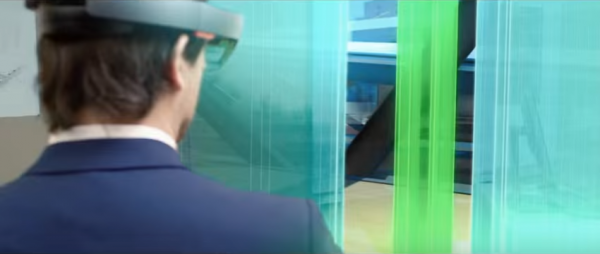As 2016 comes to a close there are two things that usually happen. Firstly, the industry media reflect on the events of the past 12 months and secondly 2017 construction trends are forecasted. So, to live up to the tradition, here are some of the major breakthroughs that have occurred this year and they will become 2017 construction trends.
Holographic and Augmented Reality
It’s no secret that the construction industry is one of the largest, yet least automated, sectors. With so much at stake with every major decision, it’s understandable why. There is evidence to suggest may change in 2017 however. Earlier this year at Microsoft’s Worldwide Partner Conference the software giant gave an in-depth look at their flagship augmented reality headset, the Hololens, which could be the technological game changer that architects and contractors have been waiting for.
HoloLens applies 3D modelling imagery to real surroundings, to give architects confidence in decision making. Still in its infancy, HoloLens is being experimented by firms across the globe, including one example where the senior manager when trialing the new HoloLens headset noticed the steel frames that were on order for a proposed 120,000 square foot academy were too long. Being able to change the order in advance saved the contractor time and money, enough money, in fact, to pay for the HoloLens. As the software and hardware develops over the coming months and years, expect to see a lot more headsets on construction sites.
SMARTer BMS
As domestic housing appliances become smarter such as the mainstream launches of Amazon Echo and Google Home battle in time for Christmas 2016 similar standards will be expected in working, learning and leisure environments too. As the market becomes accustomed to SMART devices, the ‘Internet of Things’ and automation in their surroundings, the demand will rise for sensors and cameras to be built into new builds and retrofitted into existing premises. Being able to see, interact and control the workplace remotely for example through cloud-based CCTV and security is a much more effective than having keyholders on standby. And with software led utilities management comes big data insights that can give office managers a better understanding of energy uses versus outside temperatures etc, which will pay for itself when negotiating energy rates.
Greener
Another domestic-first innovation is Elon Musk’s recently unveiled solar roof tiles. The textured glass tiles which, when in situ, appear when viewed from below, contain solar cells which generate energy from sunlight without damaging the buildings’ aesthetics. Environmental impacts are gaining weight in construction ITTs and the downside to renewable energy sources is often the damaging impact that solar panels and turbines have on a building’s overall appearance. The new roof tiles, however, are discreet and more durable and cheaper to produce compared to than alternative materials. In 2017 we should expect to see the UK embrace technological advances in renewable energy generation in urban areas now that solar cells can work within panes of glass.
Mobility
The demands of a mobile workforce have always been present in construction due to the nature of the occupation. However, as productivity software and devices develop, employees can achieve just as much on the go, as they could in the office. JBKnowledge’s construction 2016 tech report showed that now only 20.7% deem mobile capabilities as ‘not very important’ which is almost half when compared to the 2012 report where the figure was 41.1%. Mobile apps are now considered a necessity for onsite contractors and now that tablets such as the iPad Pro and Window Surface Pro exceed the experience of a laptop, we can expect that large firms will be issuing tablets as the standard personal computers (As well as those VR headsets mentioned earlier).
Business Development Tools
CRM solutions within construction are strongly associated to business development activity, and business development alone. Pipeline management, project monitoring and relationship building are the key sources to new opportunities, so it is right that CRMs should focus on those specific areas, but by doing so all of the valuable knowledge in the wider organisation and external stakeholders is discredited. One of Microsoft’s UK construction partners, m-hance software, has reconfigured the Dynamics 365 CRM functionality specifically for contractors. Build 365 creates a 360-degree view of your prospects, tenders and overall knowledge management and ties seamlessly into your Outlook and Office 365 applications. Organisations such as BAM and Sir Robert McAlpine have adopted the new software and seen the benefits.
In an industry where the advances in technology usually only benefit the people involved on site, in terms of tools, equipment and material production and handling, recent major progressions for the office based tasks are making it an exciting time for contractors. We should expect to see all of the forecasted trends develop further and be adopted by firms looking to offer fresh proposals to a changing market throughout 2017.

